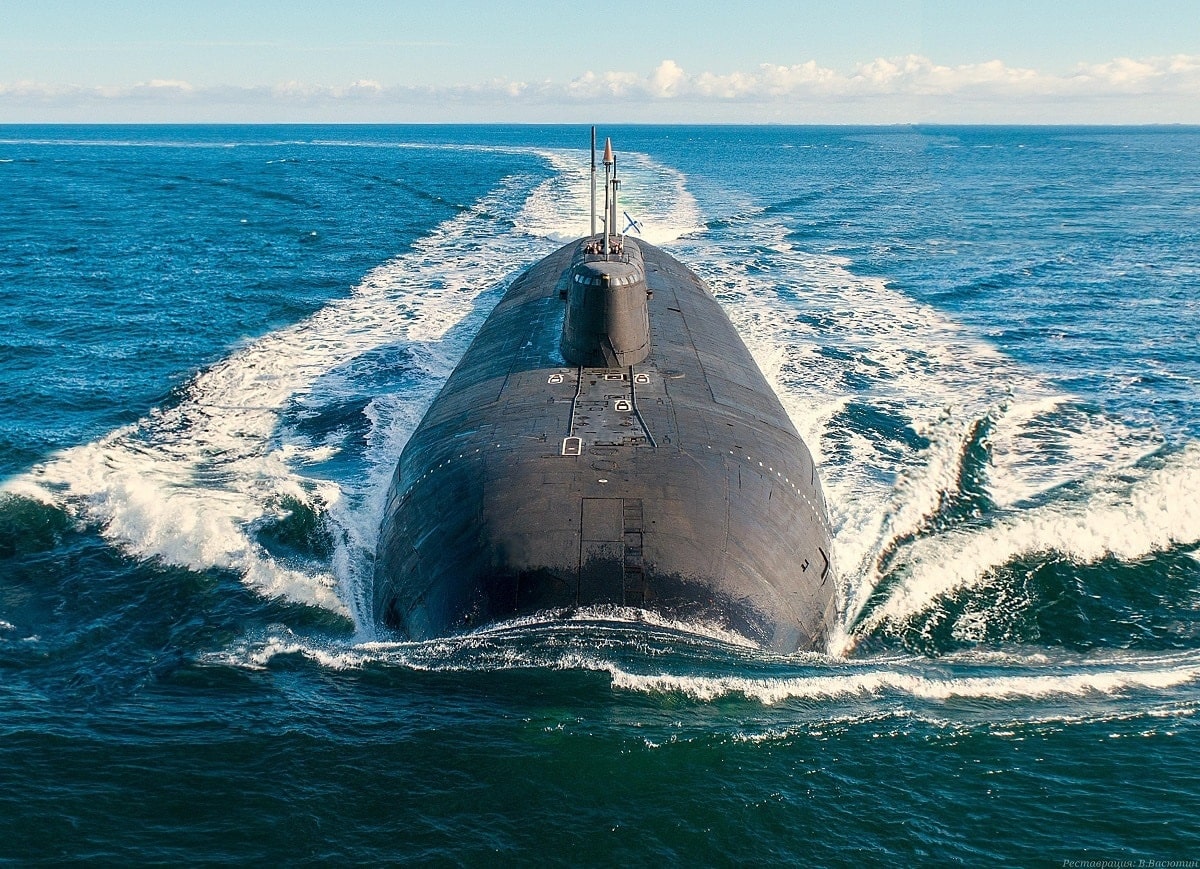The Russian military is working to equip its new nuclear submarines with hypersonic Zircon missiles.
“Multi-purpose submarines of the Yasen-M project will…be equipped with the Zircon missile system on a regular basis,” Alexei Rakhmanov, the CEO of United Shipbuilding Corporation, told RIA state news agency. “Work in this direction is already underway.”
The Yasen-class submarine
The Yasen class of Russian submarines, also known as Project 885. The Yasen was designed throughout the 1980s and built in the 1990s and 2000s. The first Yasen was commissioned in 2013. The Yasen-M is a slightly modified version with a shorter overall length, that was modeled after the Akula class subs. But whereas the Akula class is built for the hunter-killer role, the Yasen was built as a nuclear guided missile submarine.
In total, the Russians plan to build 11 Yasen class submarines. Today, three are active, while four have been completed, and five more are in the building phase.
The Yasen program seems to have righted itself, but was initially beset with delays and cost overruns. Construction on the Yasen was underway in 1993, but by 1996 construction stopped because of financial difficulties. At the time, the submarine was reported to have only been ten percent completed. The project looked doomed. But by 2004 construction had resumed, and of course the submarine was completed.
Now Russia will be outfitting the Yasen with the Zircon hypersonic anti-ship missile.
The Zircon hypersonic missile
The Zircon missile is a scramjet powered maneuvering anti-ship hypersonic cruise missile that can be fired from frigates or submarines. The Zircon is understood to have been developed from the Hypersonic Experimental Flying Vehicle (HELA) and feature a lift-generating center body; a booster stage with solid-fuel engines; and a scramjet motor with liquid-fuel.
The Zircon is a capable machine, reportedly reaching speeds of Mach 8 (6,100 miles per hour) during a flight test (although Russian President Vladimir Putin has claimed that the Zircon can reach speeds up to Mach 9). The high speed and heavy weight of the Zircon should allow for greater target-penetration than lighter, slower missiles (i.e. the Tomahawk).
The Zircon is also invisible to active radar systems. Why? Because the Zircon moves so fast that air pressure in front of the missile forms a plasma cloud, which absorbs radio waves, and creates a stealth effect known as plasma stealth.
The Zircon has a range of 135 to 270 nautical miles (at low level) and up to 400 nautical miles (in a semi-ballistic trajectory). Reportedly, the longest possible range of the missile is 540 nautical miles.
The Zircon is being outfitted on Russian naval vessels – and Putin also said that a land-based version of the Zircon is in development.
“President Vladimir Putin said earlier this year that Russia would start mass supplies of Zircon missiles as part of the country’s efforts to boost its nuclear forces,” Reuters reported. “The Russian multi-purposes frigate Admiral Gorshkov, which has tested its strike capabilities in the western Atlantic Ocean earlier this year, has already been equipped with Zircon missiles.”
Harrison Kass is the Senior Editor and opinion writer at 19FortyFive. An attorney, pilot, guitarist, and minor pro hockey player, Harrison joined the US Air Force as a Pilot Trainee but was medically discharged. Harrison holds a BA from Lake Forest College, a JD from the University of Oregon, and an MA from New York University. Harrison listens to Dokken.
From the Vault
‘You Really Oughta Go Home’: F-22 Raptor Stealth Fighter Flew Under F-4 From Iran

